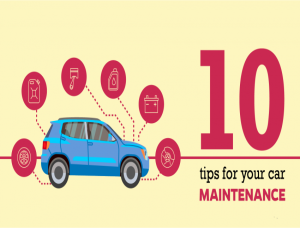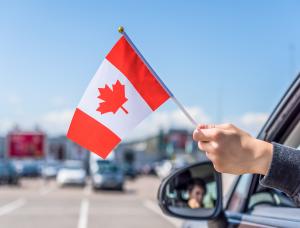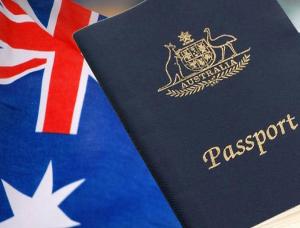A Complete Guide to Road Signs in Australia
- Car Tips,
- Oct 28, 2019

You may have wondered while traveling on the road that there are tens of thousands of different boards on the road signs. You may have taken a look at them and wondered what meaning they portray and why do they all look similar to one another? Upon consulting someone who has experience with these road signs, you may have gotten a reply that although they all look the same, there is a deep meaning hidden behind them. Pretty confusing! What did they really mean by the ‘deep meaning’? Well, to be honest, each sign does really have a different meaning. They can control the flow of traffic single-handedly and make them bow at their will… speaking figuratively. Worry not, we are here to explain the road signs to you. However, you should keep in mind that we will not tell you about all of the road signs due to their extreme amount so we will sum things up a little bit.
There are more than a thousand road signs and every single one has a different meaning to it. However, there are some which can be categorized into several different categories depending on the type of meaning they give off. If you want to take a look at all the signs, check out this Wikipedia page. If you want to read about traffic lights, which are different from the road traffic signs, check out our other article, which is designated for traffic lights, over here.
What are the road signs?
Road signs colloquially referred to as road traffic signs, road safety signs, road warning signs, and many other names, is just one single term used to describe the large (or sometimes small) metallic boards you see on the road while traveling. They might be telling you to stop, give way to pedestrians, move away, divert your course, check your speed limit, or many other things. It is mandatory to follow these road traffic signs since they are made by the law and not obeying them may result in a punishment (usually a fine) or can even have harsh consequences like an accident, etc. It is better to follow these road signs’ rules since they are usually for our own betterment and although you are in a hurry or are driving for fun, you would need to follow them so as to prevent yourself from running into unwanted circumstances.
What is the general purpose of road signs?
As aforementioned, the road signs have a general-purpose of explaining to the public the traffic laws that are needed to be obeyed at the current point.
How many types of road signs are there?
Well, to be honest, there are no “official” types of road signs. However, we have classified some of the most important road signs into the following categories:
1- Stop Signs
2- Turn Signs
3- Route Markers
4- U-Turn Signs
5- Give Way Signs
6- Pedestrian Signs
7- Speed Limit Indicators
8- Parking Signs
9- Road Work Signs
10- Warning Signs
11- No Entry Signs
Beware that these categories have been made out of those signs which we believe are a must-to-know by all the people living in or planning to move to Australia. There are many other road signs too which are not mentioned here. A detailed explanation of all the above-mentioned road signs has been provided below:
Stop Signs:
Stop signs, as the name suggests, indicate when you need to stop. Whenever you see a stop sign, you must immediately come to a halt and make sure you do not cross the sign or whatever the sign was indicating so as to refrain from performing any such thing that you were not supposed to do. Stop signs are usually found with a collection of other signs such as stop going on this road and turn towards the other road or lane, or halt/stop for an identity check.
Turn Signs:
Turn signs are one of the most common types of road signs you would see out there in the road. These may indicate that you can turn left, right, go straight or the opposites of this i.e. you can not turn left, right, or go forward. These are basically indicators of whether or not you can take a turn in a particular direction.
Route Markers:
Route Markers are usually seen on highways and indicate which route you are going on. The routes usually are in numbers such as Route 61 which may lead to some specific place through a highway.
U-Turn Signs:
As the name suggests, U-turn road signs have two purposes only; to either indicate that U-turn is allowed or to indicate that U-turn is not allowed. When a U-turn is allowed, you are not required to take a u-turn, you are just allowed to do so. However, when a U-turn is not allowed, you MUST NOT take u-turn at all costs. If you want to do it, find a path by moving a little bit forward where u-turn is allowed.
Give Way Signs:
Give way signs are usually seen on the intersections or on the types of roads which are specifically made for a specific type of vehicle. You may see these signs with a yellow background and a type of vehicle made on them e.g. a bicycle, a truck, etc. This type of road signs is not restricted just to the vehicles, but also on the people. Give way to old people is a really good example of giving way sign with a peoples group in it.
Pedestrian Signs:
Pedestrian signs maybe both for pedestrians and pedestrians. In terms of pedestrians, do not cross this road, watch out for incoming cars, etc. are a good example of road signs for pedestrians. On the other hand, the road signs about pedestrians may actually be for the drivers to warn them. These include “let the pedestrians cross”, “watch out for pedestrians”, and other signs of this type.
Speed Limit Indicators:
Another of the most used road signs, speed limit indicators indicate the maximum speed you are allowed to drive. They usually have two things written on them, a number and the type of vehicle the speed limit is for. For example, “LTV 80” means 80 km/h for light transport vehicles and “HTV 50” would mean 50 km/h is the maximum speed for a heavy transport vehicle.
Parking Signs:
Parking signs indicate when parking is allowed and for how much time, and when it is not allowed. A no parking sign would mean you are not allowed to park here and if you do, your vehicle is surely to be impounded if caught.
Road Working Signs:
Road Construction or Road Working Signs indicate a road under construction. They tell a driver about a road that is under construction and the necessary precautions the driver must take in order to not get into any trouble.
No Entry Signs:
No entry signs are really self-explanatory. They prevent access to some specific/particular area or place.
Warning Signs:
Warning signs have a yellow background. They basically warn the driver about an upcoming traffic sign, traffic rule, or a possible catastrophe. For example, a warning sign about “falling rocks”, “avalanche”, “upcoming speed camera”, etc. are the examples of warning signs.
Those were all the categories of road signs we had to offer, however, if you want to read more about driving and driving-related articles, check out our website Easy Driving Test.














